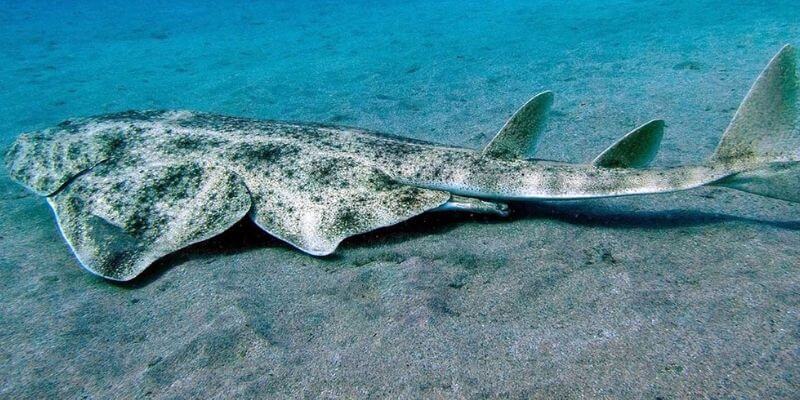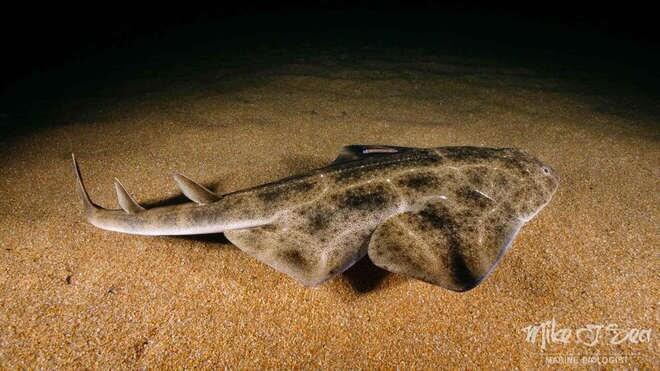Angel Shark Facts
Today we learn about surprising and fascinating facts about Angel sharks. So let's dive into the ocean and take a closer look at the top 14 Angel shark facts.

Scientific Classification of Angel Shark
- Kingdom – Animalia
- Phylum – Chordata
- Class – Chondrichthyes
- Order – Squatiniformes
- Family – Squatinidae
- Genus – Squatina
- Species – squatina

Angel Shark Species
- Sawback Angelshark
- Clouded Angelshark
- Eastern Angelshark
- Angelshark
- Ornate Angelshark
- Ocellated Angelshark
- Hidden Angelshark
- Sand devil
- Australian Angelshark
- Chilean Angelshark
- Japanese Angelshark
- Taiwan
- Angel shark indonesian
- Angelshark
- Smoothback Angelshark
- Western Angelshark
- Argentine Angelshark
- Pacific Angelshark
- Gulf Angelshark
- Mexican Angelshark

FACT 1. ➤ Angel sharks are an unusual type of shark that was once common throughout the subtropical waters of Western Europe and Northern Africa. There are 23 species of angel sharks that differ in size, color, and type of habitat.
FACT 2. ➤ Where do angel sharks live? angelsharks are generally found in coastal and outer continental shelf sediment habitats in the Mediterranean Sea and eastern Atlantic.
Also Read: Top 10 Popular Types of Sharks.
FACT 3. ➤ Their flattened bodies and broad pectoral fins make them look similar to rays.
FACT 4. ➤ Angel sharks have their eyes on the top of their heads, which they use to see their prey.
FACT 5. ➤ They have FIVE pairs of gill slits located on the sides of their heads instead of underneath.

FACT 6. ➤ These sharks bury themselves in the sand near the coral reefs at the bottom of the sea, with only their eyes exposed.
FACT 7. ➤ They remain in the same position for a few days to hunt their favorite food, such as fish, crustaceans, or mollusks.
FACT 8. ➤ Female Angel sharks can reach up to 5.5ft and males up to 7 feet in length.
FACT 9. ➤ Angel shark is also known by the names monkfish, spiny angel shark, saw back angel shark, or the “SAND DEVIL.”
FACT 10. ➤ Angel sharks use camouflage to trap their prey. Their brown, black, green, white, and reddish skin usually looks like mud or sand that allows them to blend well with the ocean floor.
FACT 11. ➤ Angel sharks can survive about 28 to 30 years in the wild.
FACT 12. ➤ Angel sharks give birth to live litters of 7-25 pups after a gestation of 8-10 months.
FACT 13. ➤ Are angel sharks endangered? “Yes, Critically Endangered.” Unfortunately, overfishing has driven the angelshark close to extinction. The IUCN lists the angel shark as critically endangered.
FACT 14. ➤ It is estimated that the population of angel sharks has declined by up to 90% in 45 years.
FACT 15. ➤ “Sharks, not mankind, are the species in danger, the animals now being driven rapidly towards extinction.” – Sharks of The World (Compagno 2005).
